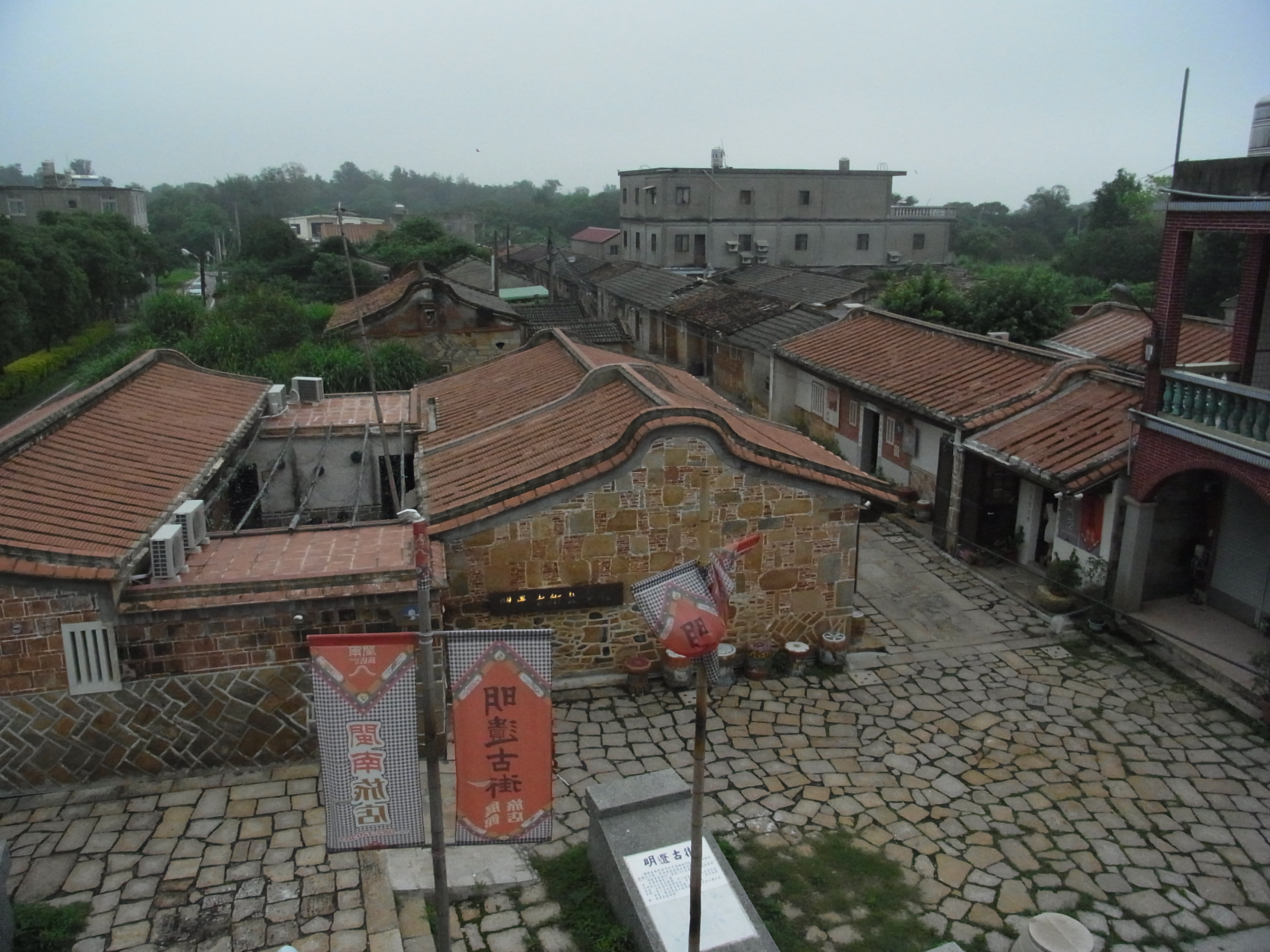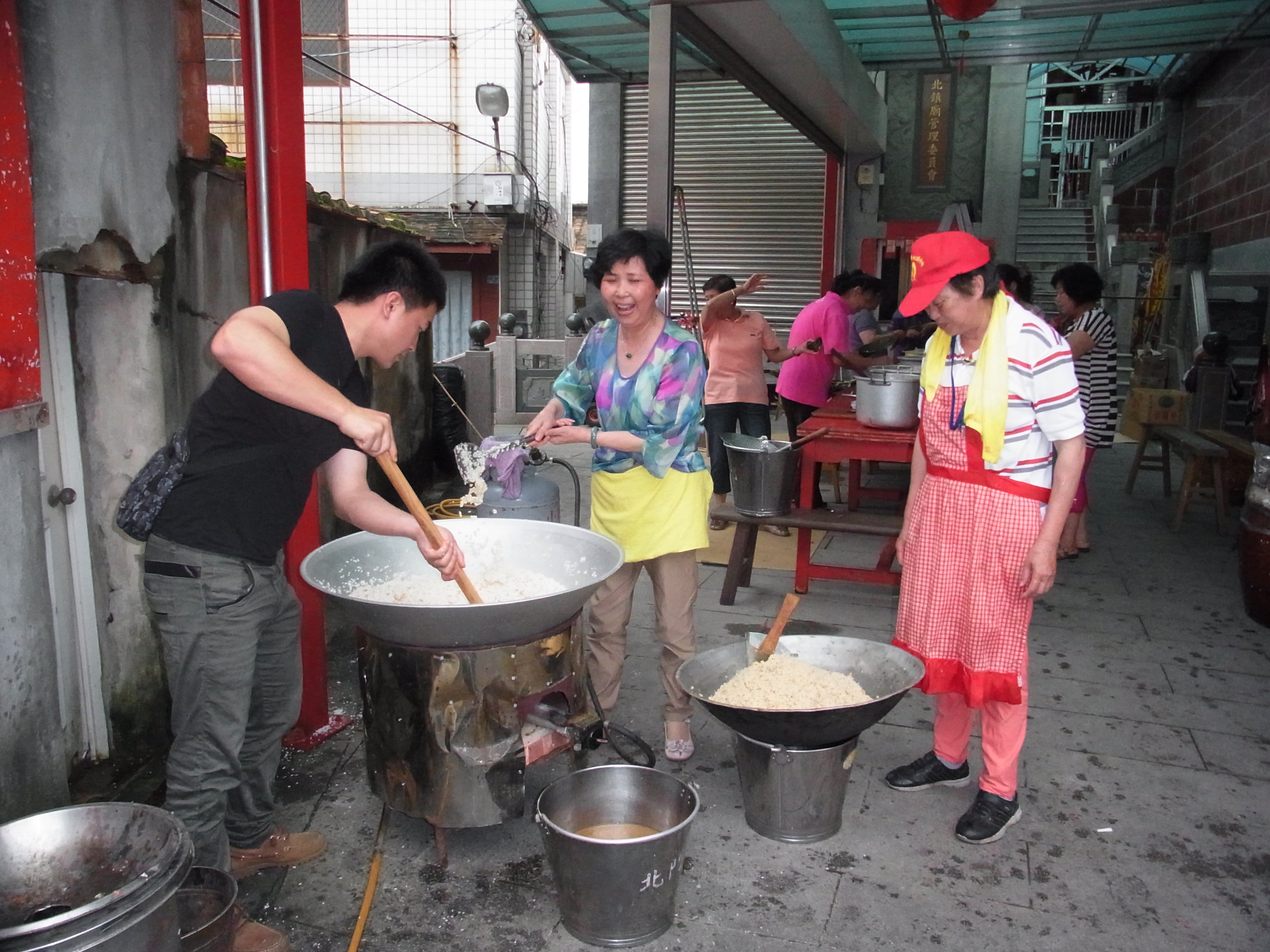IN CHINA'S GOLDEN TRIANGLE
2014-06-02
For the three-day Duan Wu holiday I went to the final part of the golden triangle of South China (not that other one near Burma) that I hadn't visited. I live in Xiamen and have visited Quanzhou and Zhangzhou already (but somehow the golden triangle includes a fourth angle - Jinmen (or Kinmen in the Wade-Giles system) also called Quemoy around the world. Since the decline of hostilities across the Taiwan Strait, rapid progress in exchanges between the traditional culture of this "triangle" have happened. People who share a language (Minnan), architecture, customs and history have been able to have family reunions, cultural exchanges and of course, trade. Because of military control on the front lines between Xiamen and Kinmen, the areas remained undeveloped and untouched (except by bombardment on both sides) for many years. Now that war is very unlikely, the Xiamen side has developed the eastern coastline in ways that are kind of sad because they obliterate the natural granite beauty that was there for years. 5 star hotels and exclusive villa enclaves crowd the foothills now. Kinmen, on the other hand, has nothing like the population of Xiamen though it's roughly the same size but different bow-tie shape. All the four town centres are quite small, the vegetation is thick and green and the customary architecture is being restored to former beauty. Much of that has been knocked down in Xiamen and while a few patches of greenery have been preserved, most of the island is covered in ever higher high-rise. I hope Kinmen can keep its rural and traditional style safe from over-development. It is sobering on both sides of the water to see the museums of the costly struggle that went on for nearly fifty years in this corner of the world, mostly unknown to the west. I should add that Kinmen is just a half hour ferry ride from Xiamen and is visible on most days from Xiamen beaches. Little Kinmen has a propaganda slogan facing Xiamen's own gigantic set of characters and the remains of the broadcasting speakers can still be seen. I once met a woman who was one of the "voices" across the water as each side lured the others to join them, also dropping gifts and leaflets in between artillery shells. Now the shell casings make the best steel cooking knives and are one of Kinmen's chief products. I had circled Little Kinmen on a tour boat with domestic tourists a few years ago when exchanges were rarer, and saw Chinese burst into tears and call out in some kind of anguish to the Little Kinmen beaches (still littered with anti-landing devices) "Come back, brothers! We love you!" In the golden triangle, the common Minnan culture that was split apart and the ache to be together again is still very strong.

The people of Kinmen were also preparing zongzi in a temple together, cleaning up their banners and athletic pairs of young men were rehearsing their lion dances with their paws on, but no costume. It was great to see what goes on under the huge hood and how they get that pugnacious "attitude" in their movements.

Text-to-speech function is limited to 100 characters
Yes, laoren, but I tried it long ago and found it's not my favourite. There were giant bottles here and there marking the site of factories of the famous gaoliang from Jinmen. Many people carried it home with them.
I heard Kinmen is famous for its liquor, Kinmen Gaoliang. Did you have a chance to try it?







Comment